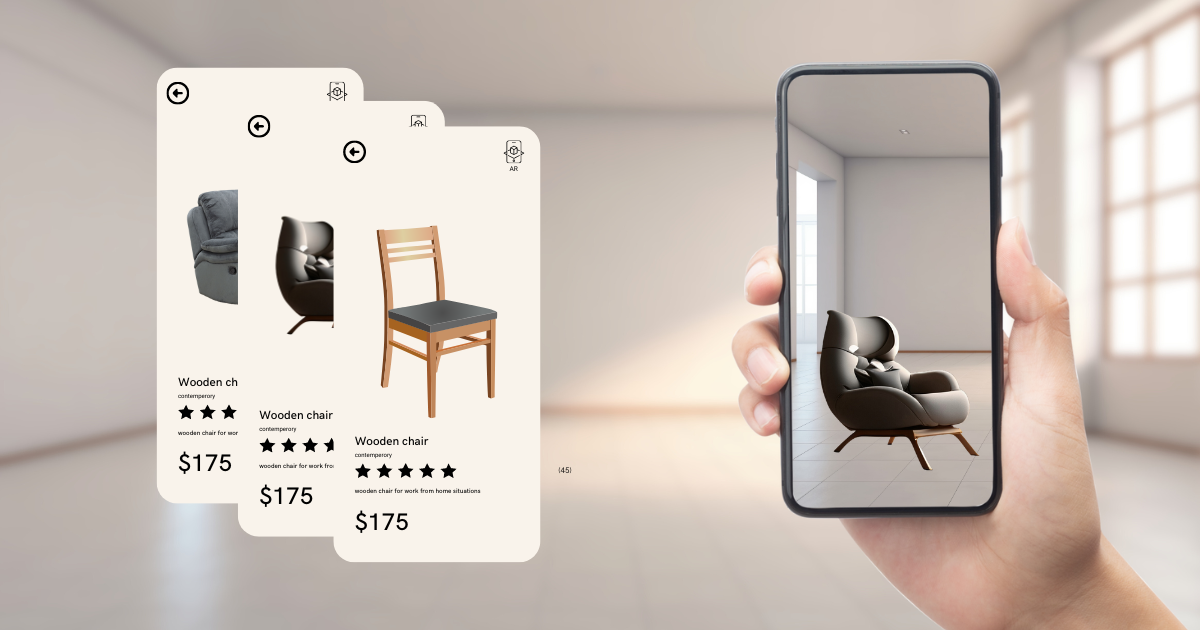In today’s tech-driven world, Augmented Reality (AR) is rapidly transforming how we interact with our environment, merging the physical and digital realms in exciting new ways. Whether you’re a tech enthusiast or a seasoned developer, creating your own AR app can open up a world of possibilities. This guide is designed to walk you through the process, from understanding the basic to how to create augmented reality app. Get ready to embark on a journey that will equip you with the skills to bring your creative visions to life through the power of AR technology.
What is Augmented Reality?
Augmented reality (AR) is an interactive technology that overlays digital information onto the real world, creating a seamless blend of physical and virtual environments. This computer-generated content can be visual, auditory, or even haptic, enriching our perception of the real world. AR differs from virtual reality (VR) by keeping users grounded in the physical world, while VR creates a completely immersive, digital experience.
In the professional realm, AR streamlines workflows. Imagine engineers using AR to visualize complex designs on real prototypes or technicians receiving step-by-step instructions overlaid on malfunctioning equipment. AR is also revolutionizing training with immersive simulations for pilots, firefighters, and even medical students.
Creativity is also flourishing with AR. Artists are creating interactive installations, museums are bringing exhibits to life with AR projections, and marketers are crafting engaging campaigns that let customers virtually try on clothes or place furniture in their homes.
AR is still maturing, but its potential is undeniable. As technology advances and AR becomes more user-friendly, we can expect even wider adoption. The future of AR is collaborative, with professionals and creatives working together to redefine workflows, spark innovation, and craft groundbreaking experiences that seamlessly blend our physical and digital worlds.
How to Build YOUR OWN Augmented Reality App
Augmented reality (AR) is no longer just science fiction. With the rise of powerful smartphones and accessible development tools, building your own AR app is within reach. Whether you have a creative vision or want to solve a practical problem, AR can be a powerful tool. But where do you begin? This guide will equip you with the knowledge to embark on your AR development journey.
Step 1: Concept and Planning
Find your niche: The AR market is full of possibilities. Think about what problem you can solve or what experience you can create. Educational apps, product visualization tools, and location-based games are just a few examples.
Decide on your AR type: There are two main types of AR apps: marker-based and marker less. Marker-based apps rely on physical images or objects the app recognizes to trigger the AR experience. Marker-less apps use features like GPS or LiDAR scanners to understand the environment and place AR elements accordingly.
Step 2: Choose Your Tools
Coding vs. No-code Platforms: If you have coding experience, consider using a game engine like Unity or Unreal Engine with powerful AR development tools like ARKit and ARCore. These offer maximum flexibility but require programming knowledge. No-code platforms like X are emerging, allowing users to build basic AR apps with drag-and-drop interfaces.
Step 3: Design and Development
3D Assets: You’ll need 3D models, images, and sounds to populate your AR experience. There are online marketplaces or you can create your own assets with 3D modeling software.
Develop Your App: This stage depends on your chosen platform. For code-based development, follow the tutorials and documentation provided by your chosen engine and AR SDK (Software Development Kit). No-code platforms offer user guides and templates to help you build your app.
Step 4: Testing and Refinement
Test rigorously: Test your app on a variety of devices to ensure smooth performance and accurate AR rendering.
Gather feedback: Share your app with beta testers and get their feedback on usability and functionality.
Step 5: Launch and Promotion!
App Stores: Once your app is polished, submit it to the Apple App Store or Google Play Store, following their guidelines.
Marketing: Create a buzz! Promote your app on social media, relevant forums, and AR communities.
Conclusion on how to create augmented reality app
Whether you’re a seasoned developer or a complete beginner, there’s a path for you in the exciting world of AR app development. Platforms like PlugXR are making AR creation more accessible than ever. With their intuitive interface and vast library of assets, you can turn your ideas into reality without writing a single line of code. So, don’t wait any longer! Start your AR development journey today and see what the future holds!

